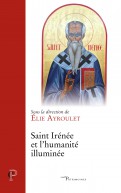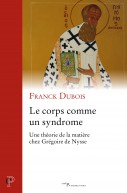
Introduction à l'histoire de l'exégèse, II
Collection Initiations aux Pères de l'Église
196 pages - avril 2009
24,20€
Les œuvres d'ensemble qui présentent, de manière distincte et successive, les traits principaux de l'exégèse pratiquée par chacun des grands Pères de l'Église restent rares. C'est cette lacune qu'ont comblée, au cours des années 1980, les quatre volumes de l'« Introduction à l'histoire de l'exégèse de Bertrand de Margerie ». Ce second tome nous fait revivre le choc des rencontres culturelles entre, d'une part, Cicéron et Virgile, d'autre part, les Écritures juives et chrétiennes. Du IIIe au Ve siècle, ces grands convertis que furent Tertullien, Hilaire de Poitiers, Ambroise de Milan et Jérôme ont mis les techniques païennes au service de l'Évangile du Christ. Fidèle à la méthode utilisée dans son précédent volume sur les Pères grecs et orientaux, Bertrand de Margerie introduit ses lecteurs dans la vision des premiers interprètes latins de la Bible : Tertullien, qui s'est attaché passionnément à scruter le mystère du Christ-Dieu, « moelle des Écritures » ; la controverse arienne qui a stimulé la médiation christologique et trinitaire d'Hilaire ; Ambroise qui, sans cesser d'être préoccupé d'annoncer les vérités de la foi, fait œuvre de poète saisi par la splendeur du mystère pascal ; Jérôme qui, dans son désert de Chalcis, témoigne d'une intelligence aiguë du rapport entre Bible, existence et culture. Même s'ils ont pu donner de tel ou tel verset une interprétation dogmatique que l'on est fondé à rejeter, les exégètes docteurs de l'âge patristique fournissent un modèle de démarche qui reste bon à méditer. Le souffle scripturaire de cette théologie, la visée théologique de ces commentaires sont encore un enseignement pour aujourd'hui.
--
Global works presenting, distinctly and successively, the principal characteristics of the exegesis practiced by each of the great Fathers of the Church remain rare. The four volumes of ‘Introduction à l'histoire de l'exégèse’ by Bertrand de Margerie, written during the 1980s, filled that gap. In the second volume, we relive the cultural clash between Cicero and Virgil on the one hand and the Jewish and Christian Scriptures on the other. From the 3rd to the 5th centuries, great converts such as Tertullian, Hilary of Poitiers, Ambrose of Milan and Jerome used pagan techniques in the service of Christ’s gospel. Faithful to the method used in his previous volume on the Greek and Eastern Fathers, Bertrand de Margerie introduces his readers to the vision of the first Latin interpreters of the Bible: Tertullian, who was passionately involved in the mystery of Christ-God, ‘the essence of the Scriptures’; the Arian controversy which stimulated Hilary’s Christological and Trinitarian meditation; Ambrose who, never ceasing to announce the truth of faith, is inspired to poetry by the splendour of the Pascal mystery; Jerome, in his desert of Chalcis, shows a sharp intelligence of the relation between the Bible, existence and culture. Even if they gave a dogmatic interpretation of certain verses which we can rightly refuse today, the exegetical doctors of the patristic age provide a model approach that remains worthy of mediation. The Scriptural energy of this theology, the theological aim of the commentaries, still provide valuable lessons today.
--
Global works presenting, distinctly and successively, the principal characteristics of the exegesis practiced by each of the great Fathers of the Church remain rare. The four volumes of ‘Introduction à l'histoire de l'exégèse’ by Bertrand de Margerie, written during the 1980s, filled that gap. In the second volume, we relive the cultural clash between Cicero and Virgil on the one hand and the Jewish and Christian Scriptures on the other. From the 3rd to the 5th centuries, great converts such as Tertullian, Hilary of Poitiers, Ambrose of Milan and Jerome used pagan techniques in the service of Christ’s gospel. Faithful to the method used in his previous volume on the Greek and Eastern Fathers, Bertrand de Margerie introduces his readers to the vision of the first Latin interpreters of the Bible: Tertullian, who was passionately involved in the mystery of Christ-God, ‘the essence of the Scriptures’; the Arian controversy which stimulated Hilary’s Christological and Trinitarian meditation; Ambrose who, never ceasing to announce the truth of faith, is inspired to poetry by the splendour of the Pascal mystery; Jerome, in his desert of Chalcis, shows a sharp intelligence of the relation between the Bible, existence and culture. Even if they gave a dogmatic interpretation of certain verses which we can rightly refuse today, the exegetical doctors of the patristic age provide a model approach that remains worthy of mediation. The Scriptural energy of this theology, the theological aim of the commentaries, still provide valuable lessons today.
- Dimensions : 135x215x12
- ISBN : 9782204089050
- Poids : 260 grammes
Avec la collaboration de : Marie-Joseph Rondeau
DU MÊME AUTEUR
Abbé Lacordaire (1828-1838)
240 pages - juin 1997
> VOIR TOUS LES LIVRES DE l'AUTEUR









